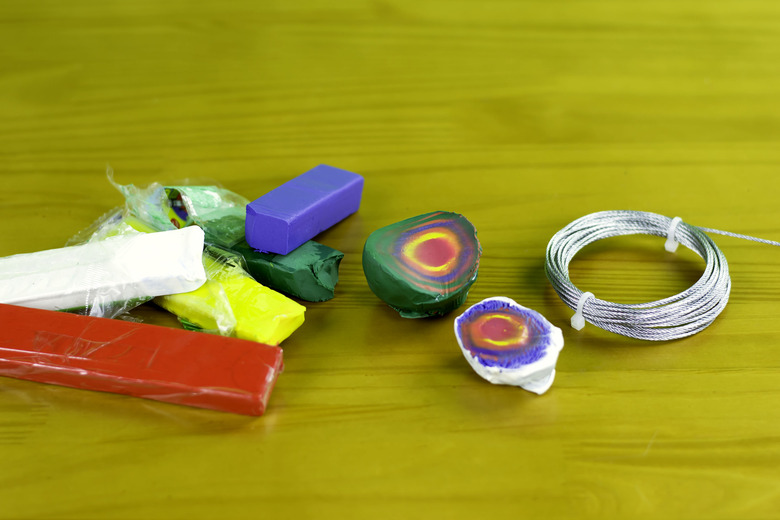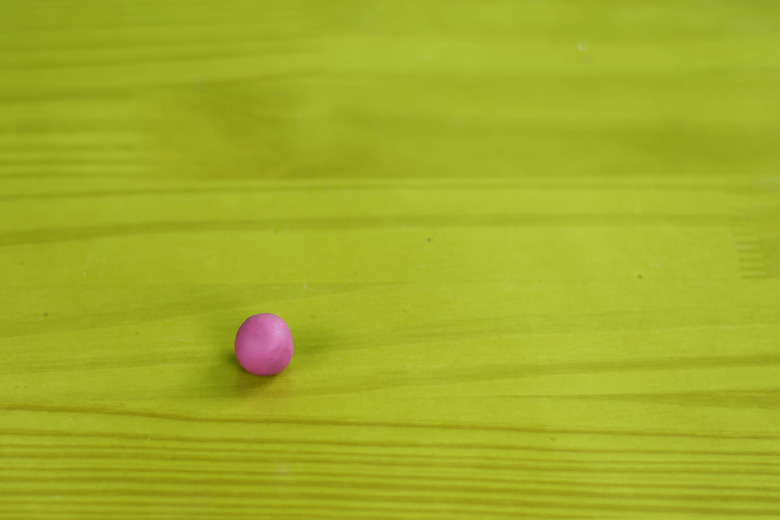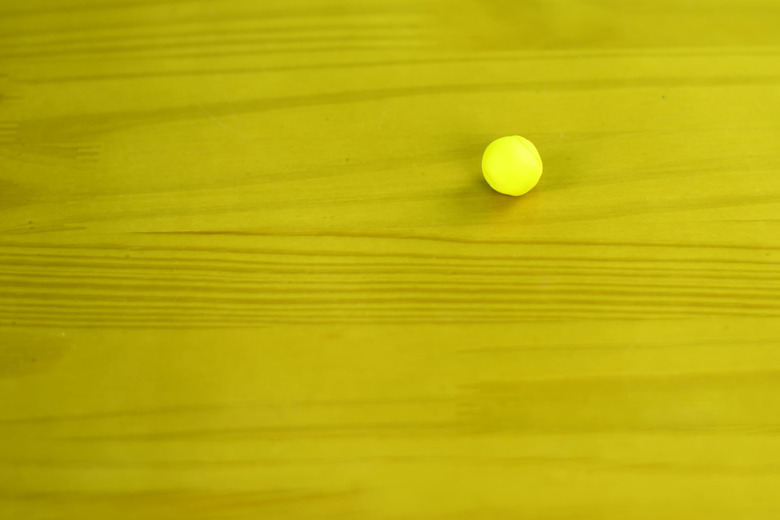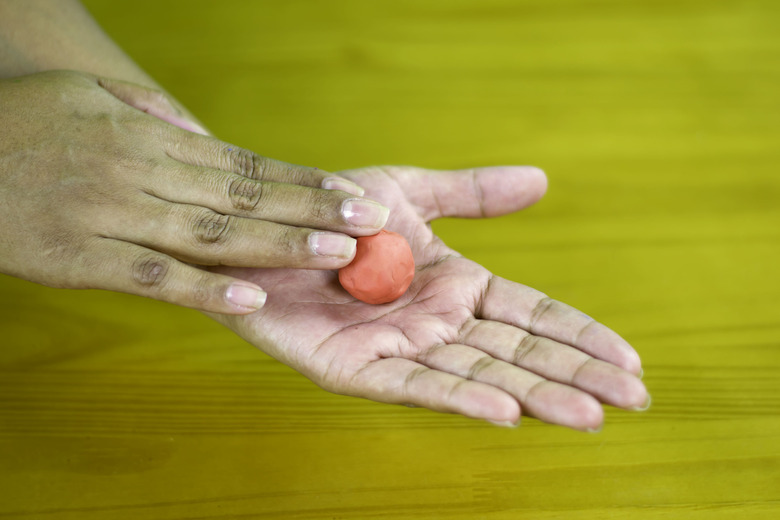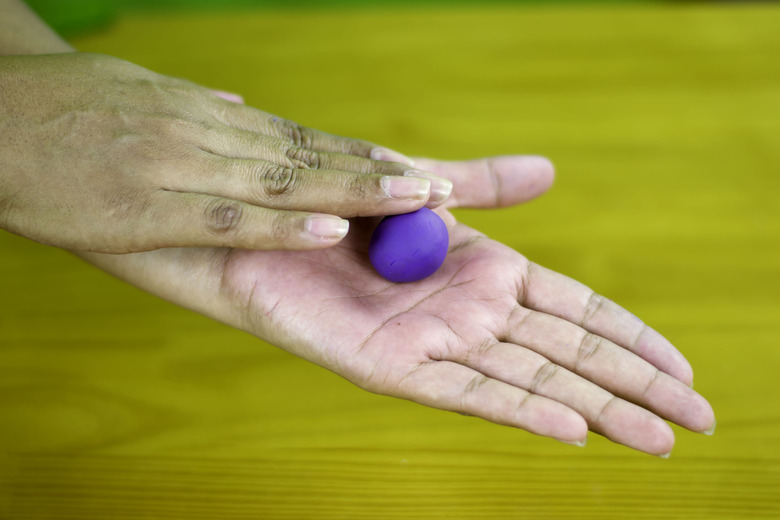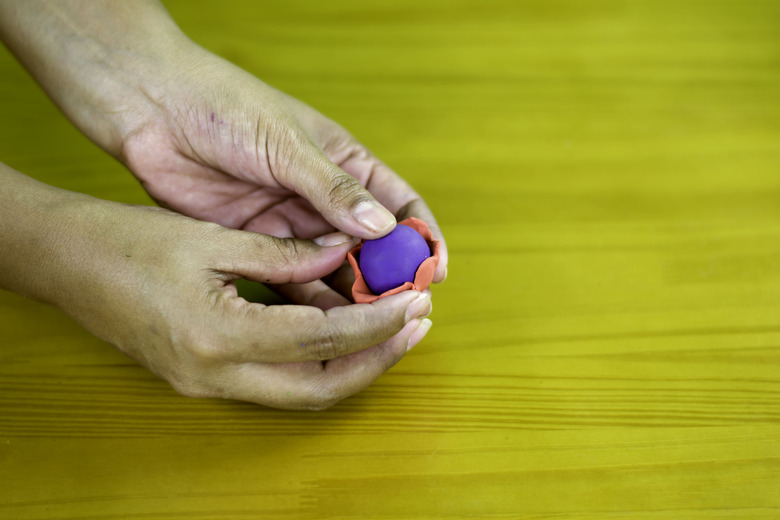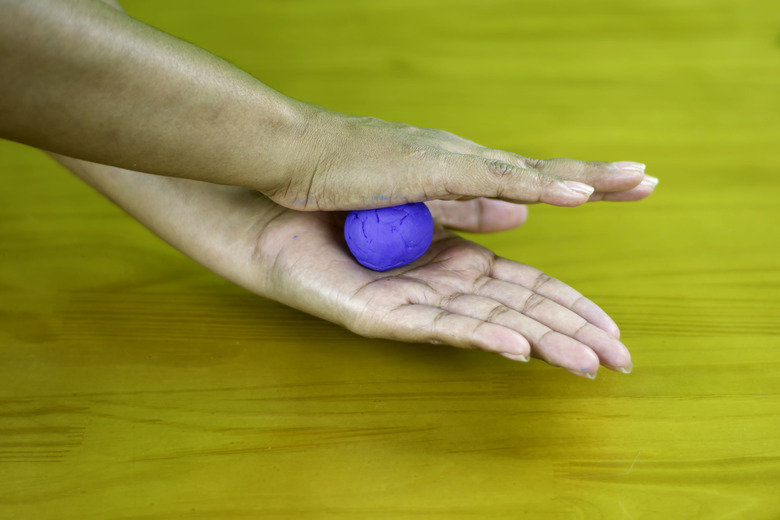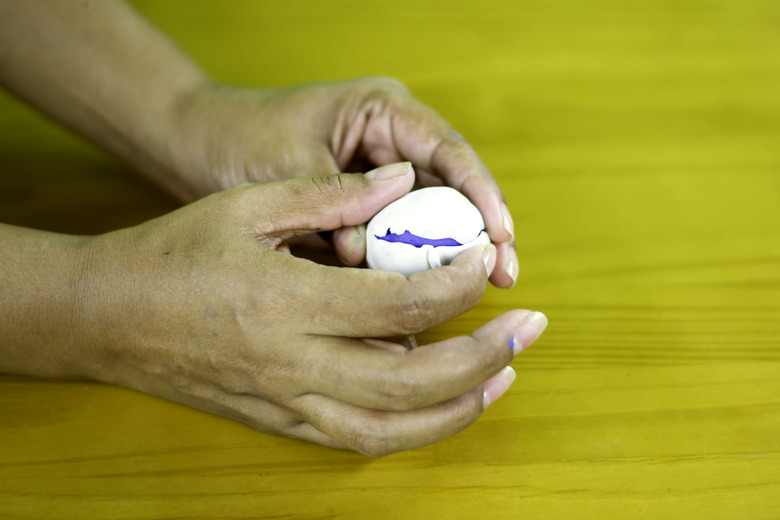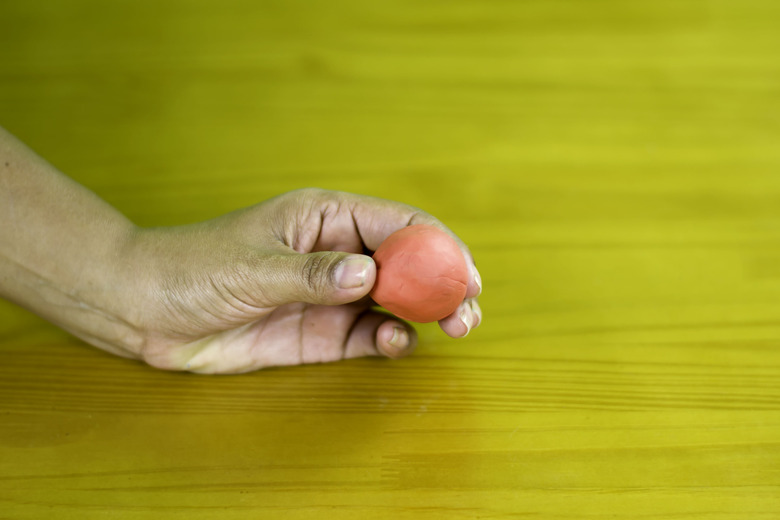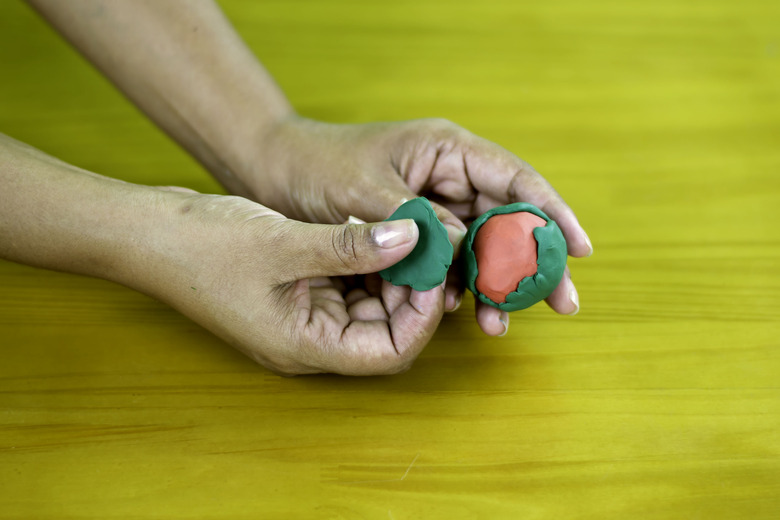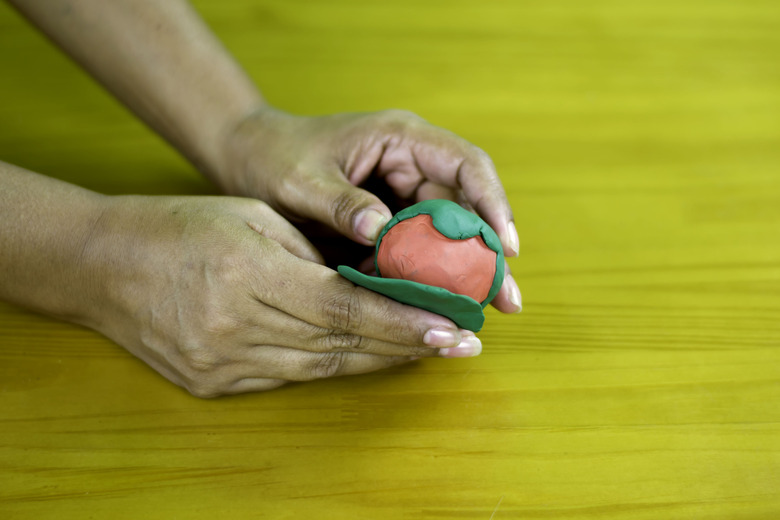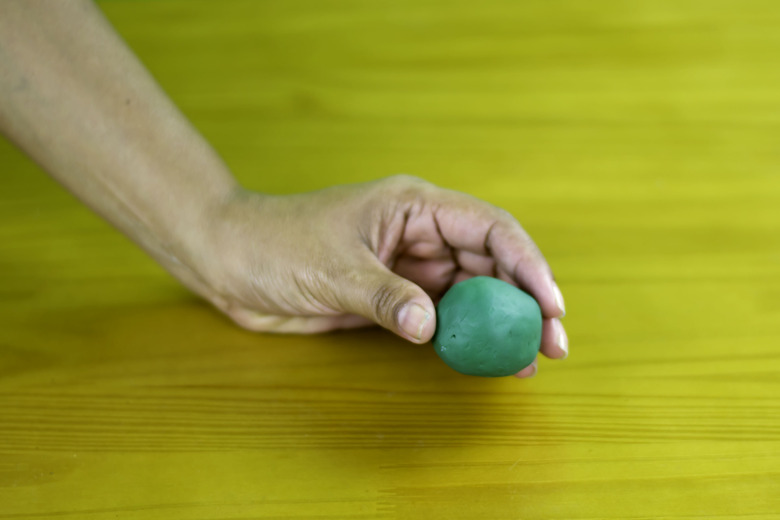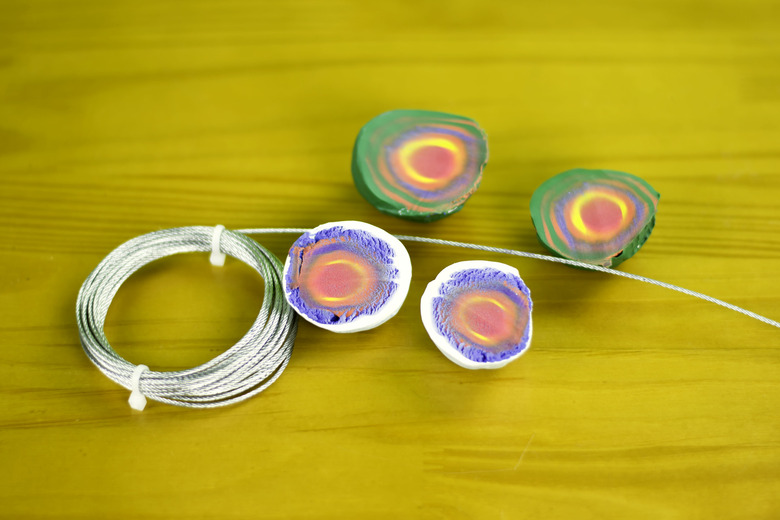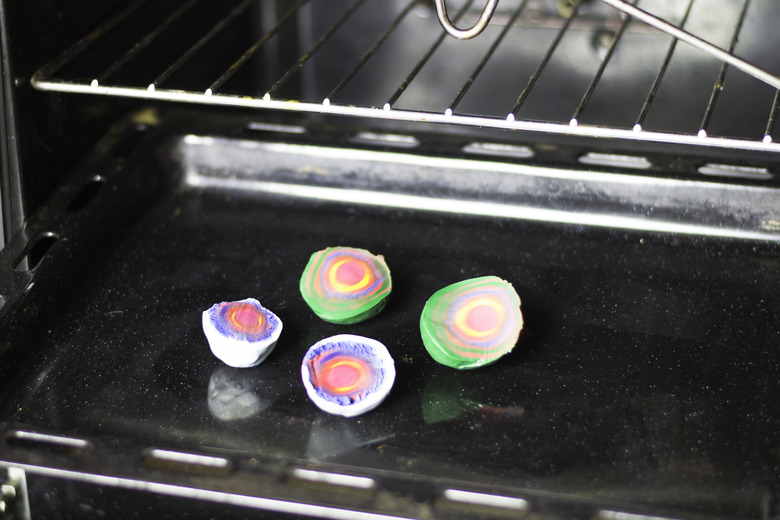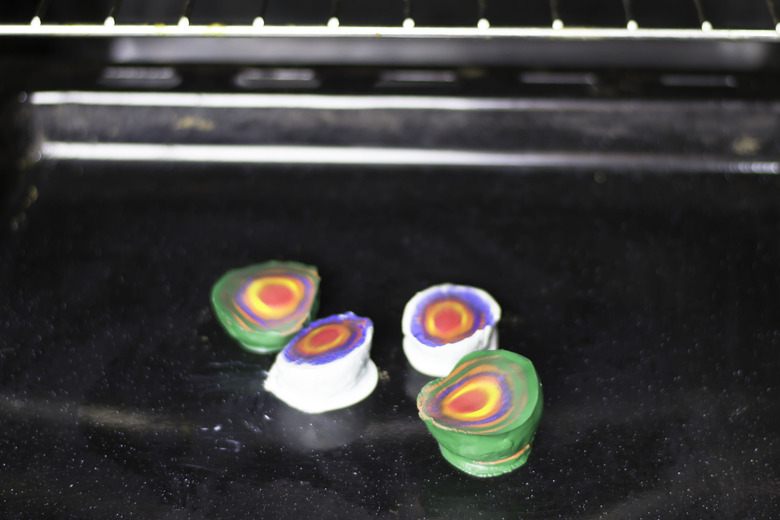How To Create A 3D Model Of An Animal Or Plant Cell
Animal and plant cells are similar in many ways, but have distinctive differences as well. For example, a plant cell has a sturdy cell wall cover, while an animal cell has only a thin, malleable cell membrane. If you are giving a report on the differences between animal and plant cells, you can demonstrate these differences much more clearly by making 3D models of an animal and a plant cell.
Animal Cell
Step 1
Roll a pea-sized piece of red polymer clay into a sphere. This will be the animal cell's nucleolus.
Step 2
Wrap enough yellow polymer clay around the nucleolus until it has a 1/2 inch layer surrounding it. This will be the animal cell's nucleus.
Step 3
Cover the nucleus with a 1-inch layer of orange polymer clay. This will be the animal cell's cytoplasm.
Step 4
Place three pea-sized pieces of purple clay around the cytoplasm. These will be the golgi bodies of the animal cell.
Step 5
Cover the cell with another 1/2-inch layer of orange polymer cytoplasm.
Step 6
Place a 1/2-inch piece of blue polymer clay onto the cytoplasm. This will be the animal cell's vacuole.
Step 7
Cover the entire cell with a thin 1/4-inch layer of white polymer clay. This will be the cell membrane.
Plant Cell
Step 1
Repeat steps 1 through 5 of making an animal cell.
Step 2
Place five to six pea-sized pieces of green polymer clay onto the cytoplasm. These will be the chlorophyll of the plant cell.
Step 3
Cover the nucleus with another 1/2-inch layer of orange polymer clay. This will be more of the plant cell's cytoplasm.
Step 4
Cover the cell with a 1/2-inch thick layer of green polymer clay. Press the cell into a cube. This will be the cell wall of the plant cell.
Baking the Cells
Step 1
Slice through the middle of both cell models using a clay wire. This will open up the cells to reveal the inner organelles.
Step 2
Place the pieces onto a jelly roll tray, and bake it in a 200 degrees F oven for 15 minutes.
Step 3
Allow the clay to cool completely before displaying the models.
Things Needed
- Polymer clay
- Clay wire
- Jelly roll pan
- Oven
Cite This Article
MLA
Sundstrom, Kelly. "How To Create A 3D Model Of An Animal Or Plant Cell" sciencing.com, https://www.sciencing.com/create-model-animal-plant-cell-7331144/. 24 April 2017.
APA
Sundstrom, Kelly. (2017, April 24). How To Create A 3D Model Of An Animal Or Plant Cell. sciencing.com. Retrieved from https://www.sciencing.com/create-model-animal-plant-cell-7331144/
Chicago
Sundstrom, Kelly. How To Create A 3D Model Of An Animal Or Plant Cell last modified March 24, 2022. https://www.sciencing.com/create-model-animal-plant-cell-7331144/
